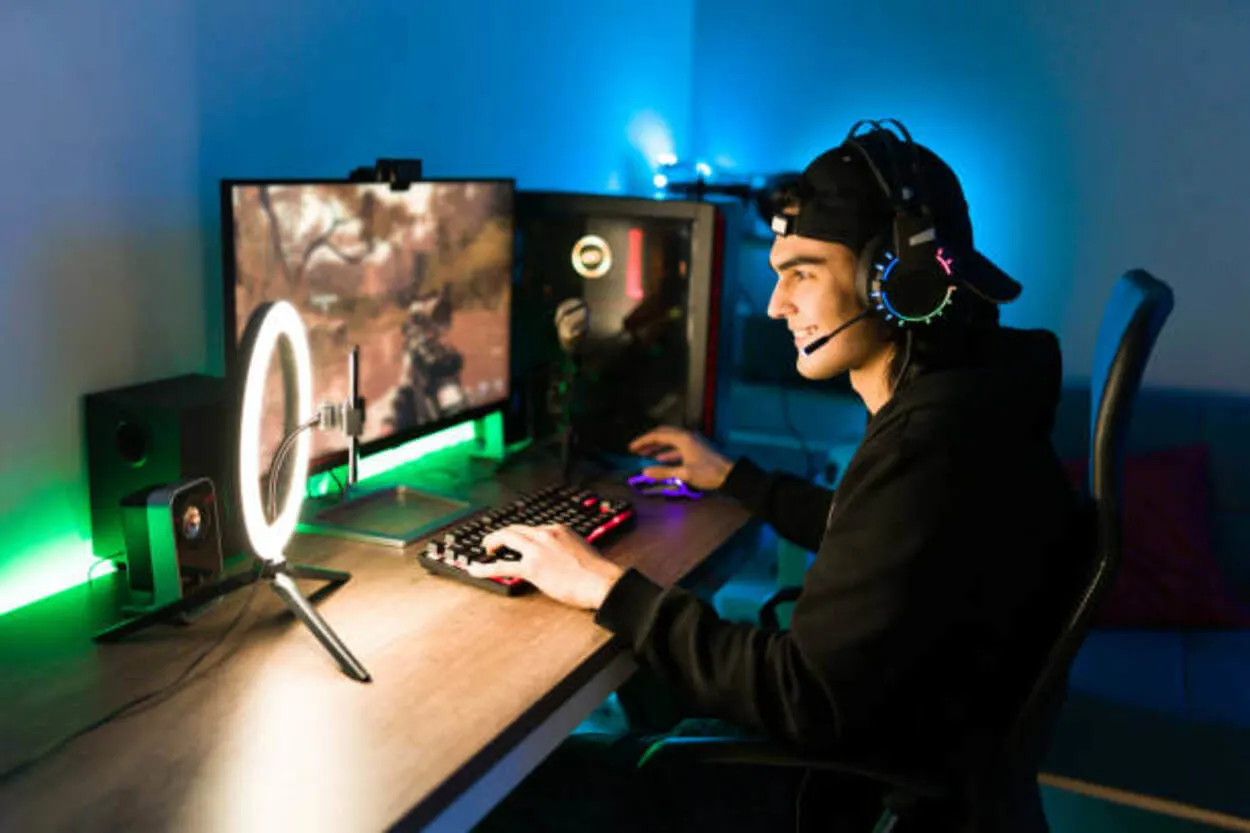If you’re into video games and plan to buy a new monitor for your games, then you must have probably come across the 144hz and 60hz monitors. The 60Hz monitor is the standard gaming monitor that’s commonly used by gamers, it varies to some degree in comparison with the 144hz monitors.
Now that you understand what a gaming monitor is and what are their uses and the needs it fills, you must be confused between getting a 144hz or a 60hz monitor. So here’s a detailed guideline to help you make the correct choice.
What’s a Gaming Monitor?
There are several reasons why a gaming monitor is better than a regular monitor and why do gamers prefer to use a gaming monitor instead of a regular monitor for gaming. In fact, there are actual differences between a gaming monitor and a regular monitor.
Gaming monitors are specially designed for gamers to have a better gaming experience and to reduce eye strain. The gaming monitor is manufactured keeping the eye health of the gamer in mind. Gaming monitors display the visuals of the game in as perfect a resolution as possible.
Gaming monitors have improved features of increased refresh rates, color palette accuracy, and better contrast ratio which you wouldn’t get in a regular monitor. The graphic of the display from these monitors is improved and provides you with a better gaming experience compared to a regular monitor.
Plus, gaming monitors give you full control over the screen colors and you are allowed to decide what colors you want to see on the screen since gaming monitors have an adjustable backlight.

Are 60hz Monitors Good for Gaming?
If you’re on a budget and don’t want to spend too much on a monitor or are playing games that don’t require that split-second advantage over your opponent, a 60hz monitor is perfect for your requirements.
Most people prefer higher refresh rates to get smoother visuals or reduced display lag to gain that competitive advantage. However, if you’re on a budget then that can be a little expensive.
Moreover, you can only get the benefit from the refresh rate if your PC can push the equivalent amount of frame per second (FPS). One FPS is equal to one refresh rate, so you must have a much more powerful PC to get the full benefit of a 144hz or 240hz refresh rate.
If you have a budge PC then 60 FPS should be easy to achieve, especially on 1080p with some graphical tweaking if you need it. Moreover, some genres are perfect on a 60Hz monitor and don’t require a 144Hz monitor, such as:
- Racing games
- Strategy
- Story-Driven
- Simulation
- Sports
- MMO
Though some may give you a better gaming experience on a 144Hz monitor with a high refresh rate, that doesn’t mean that a 60Hz monitor isn’t good enough and it isn’t essential to get a fantastic experience.
If you’re looking for a simple monitor to fit your needs and don’t play competitive games, then a 60Hz monitor is great for you since it has a very viable refresh rate.
What Should You Get: 144Hz or 60Hz Gaming Monitor?
Getting a monitor that can run over 120 frames per second in a video game is quite easy at the moment. And using a 144Hz monitor for games like this will greatly improve your gaming experience with increased performance and smoother gameplay.
The 144Hz monitors are generally used for competitive games with high-quality graphics, such as Counter-Strike: Global Offensive or the League of Legends where every millisecond, every frame, and minor movement counts for something in the game.
Here’re a few things that you should consider before buying a 144Hz monitor:
- 144Hz monitor doesn’t have the great color accuracy that you get in a 60Hz monitor. If you compromise on some color accuracy for a better response time then you should go for a 144Hz monitor.
- The PC only runs video games at 100 frames each second or more.
- You have to challenge in video games at a very high level and require to be on top of the game.
- You desire to complete the best edge you get as a good gaming monitor can give you superiority over your rivals.
It’s pretty obvious that to get higher the resolution of your gaming monitor, the better graphics card you would need to have to achieve those higher frame rates.

What Response Time Is the Best for a Gaming Monitor?
Response time refers to how long the monitor takes to change from one color to another. Generally, this is advertised for gaming monitors as somewhere between 5ms and 1ms, with 1ms being the better option.
The less time a monitor takes to change from one color to another, the sharper the display of the monitor is. Response time is an important factor when deciding which monitor is better since the character is always moving, as in the environment.
High response time won’t give you a good gaming experience since the colors will bleed and leave a blurry trail as the objects move because your display takes too long to change the colors. This is called ghosting and it’s not something that any gamer wishes to have on his monitor.
Ghosting ruins your gaming experience and looks very hard and distracting. It can also mess up your aim in competitive games. Ideally, your monitor’s response time should be less than 5ms, and in a perfect world, you can get the lowest being 1ms.
However, even if you get a response time of 1ms and 5ms on a reliable 60hz monitor, you should have a great-looking image.
What’s the Difference Between a 144hz Gaming Monitor and a 60hz?
As mentioned earlier, the monitor refresh rate has a value attached to it that’s measured in hertz. The refresh rate value and response time are the two most important factor since it determines the number of frames per second the monitor in question can display and how quickly it can update new information coming from your PC.
The main difference between a 144Hz monitor and a 60Hz monitor is the refresh time. A 144Hz monitor can refresh its image up to 144 times in one second, whereas, the standard 60hz monitors have a refresh rate of 60 times a second.
The higher the refresh rate will be on your monitor the less time it will take to upload the images. The mode of operation of the refresh time is similar to how the frames per second in video games work although there are some differences.
The frame per second shows how many frames can be made on your graphics card in one second. On the other hand, the gaming monitor refresh rate shows how many times the image is updated in real-time on the monitor.
A gamer who uses a 60Hz monitor and has recently updated it to a 144Hz monitor can easily notice a change in the gaming experience and in the response time. Many gamers who shifted to a 60Hz monitor from a 144Hz monitor complain about the slow response time on a 60Hz monitor.
Moreover, do keep in mind that the higher refresh rate gaming monitors are not the best pick for better display quality and good color distribution. To get better and good color accuracies, you should go for a 60Hz monitor, but if you want a quick refresh rate then a 144Hz monitor is ideal for you.
Conclusion
60Hz monitor is enough for most of the games and is all you need for the majority type of gaming genres. Even if you’re into competitive games, its 60Hz monitor gives you a satisfactory gaming experience.
If you have a budget PC build, then I would suggest you go for a 60Hz monitor since it has a decent refresh rate and you won’t feel the need for a higher refresh rate. Moreover, you don’t want to buy a higher refresh rate monitor if you can’t reach that refresh rate.
However, if you’re planning to get a 144Hz monitor for your gaming then do keep in mind that a 144hz refresh rate is only useful and will only give you a better experience if you can reach 144 FPS in-game.

